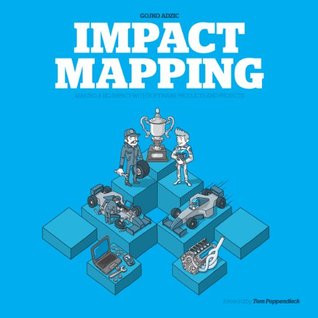More on this book
Community
Kindle Notes & Highlights
by
Gojko Adzic
Read between
September 18 - September 28, 2017
Push means people need to be told what to do; pull starts with a problem or opportunity and challenges a cross-disciplinary group to effectively understand and address the issues.
An impact map is also a storyboard of our conceptual understanding of how to address a goal or target.
Impact maps visualise the dynamic relationship between delivery plans and the world around them,
The purpose of a goal definition is to allow the delivery organisation and business sponsors to re-evaluate the plan as new information becomes available.
Without a clear mapping of deliverables to business objectives, and a justification of that mapping through impacts that need to be supported, it is incredibly difficult to argue about making or not making an investment in certain items.
Impact maps bridge the two worlds: they facilitate strategic planning and thinking to create a big-picture view focused on key business objectives, but also facilitate learning through delivery and help us manage project roadmaps.
Impact maps prevent story card hell.
Visual facilitation makes meetings more effective, according to David Sibbet, because of three key factors: Participation significantly increases as people interact over the graphical presentation of ideas Big-picture thinking allows groups to compare ideas, discover patterns and find new ideas more easily Group memory improves because the meeting is recorded in pictures, and follow-through improves.
The first step in defining a good roadmap is to make sure that we have a clear mission statement that everyone agrees on. The best way to define this mission statement is by expressing the expected business goals.
The Kano model [Cohn06] provides a questionnaire to categorise features into mandatory (must-have), linear (more is better) and exciters (small amount can dramatically increase satisfaction).
Deliverables that fail to produce results should point to invalid assumptions.
Having everyone working in a single group is a good way to kill the creativity and feedback.
Another common mistake is to map out goals and impacts without good metrics – like a weightless astronaut in space, we won't be able to get good feedback on movement.


